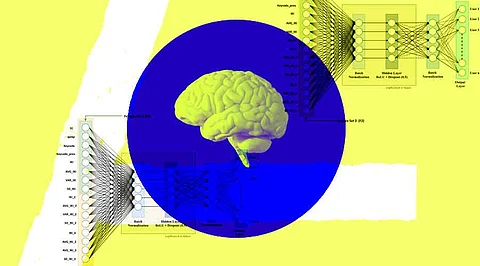

Deep learning has been at the forefront of artificial intelligence, driving innovation and breakthroughs in various domains. While supervised learning, where models are trained on labeled data, has received much attention, unsupervised learning techniques have quietly revolutionized the field.
Unsupervised learning is a subset of machine learning in which models are trained on data without explicit supervision or labeled outcomes. The primary objective is to find patterns, structures, or relationships within the data. This technique is particularly valuable when working with large datasets where labeling is impractical or expensive.
Clustering: Clustering algorithms, such as k-means and hierarchical clustering, group data points into clusters based on their similarity. Clustering is widely used for customer segmentation, anomaly detection, and image segmentation.
Dimensionality Reduction: Dimensionality reduction techniques like Principal Component Analysis (PCA) and t-distributed Stochastic Neighbor Embedding (t-SNE) reduce the number of features in a dataset while preserving essential information. They are applied to tasks such as data visualization and feature selection.
Generative Models: Generative models, like Variational Autoencoders (VAEs) and Generative Adversarial Networks (GANs), learn to generate new data samples that resemble the input data. GANs have made substantial contributions to image generation and style transfer.
Association Rule Learning: Association rule learning algorithms, such as Apriori and FP-growth, identify rules that describe relationships between variables in data. These techniques are commonly used in market basket analysis and recommendation systems.
Unsupervised learning techniques find applications in diverse domains, including:
Natural Language Processing (NLP): Word embeddings, created using techniques like Word2Vec and FastText, capture semantic relationships among words, improving language understanding and machine translation.
Computer Vision: Unsupervised learning plays a crucial role in image segmentation, object detection, and image generation. Autoencoders, for instance, are employed in image denoising.
Healthcare: Clustering and dimensionality reduction techniques are used to analyze patient data, detect disease patterns, and improve medical diagnoses.
Finance: Unsupervised learning aids in fraud detection, risk assessment, and portfolio optimization by uncovering hidden patterns in financial data.
Despite its versatility, unsupervised learning faces certain challenges, such as selecting the right algorithms and dealing with noisy data. Researchers are continually working on improving the robustness and scalability of unsupervised techniques. Recent advancements, such as self-supervised learning and contrastive learning, have enhanced the capabilities of unsupervised learning models. These techniques use the data itself to generate labels or create representations that are highly informative, leading to better performance.
Unsupervised learning techniques have a profound impact on the world of deep learning and artificial intelligence. By discovering patterns, relationships, and structure within unlabeled data, these techniques empower innovations across various fields, from healthcare and finance to NLP and computer vision. As advancements in unsupervised learning continue, we can anticipate even more breakthroughs and novel applications that will shape the future of AI and data science.
Join our WhatsApp Channel to get the latest news, exclusives and videos on WhatsApp
_____________
Disclaimer: Analytics Insight does not provide financial advice or guidance. Also note that the cryptocurrencies mentioned/listed on the website could potentially be scams, i.e. designed to induce you to invest financial resources that may be lost forever and not be recoverable once investments are made. You are responsible for conducting your own research (DYOR) before making any investments. Read more here.
